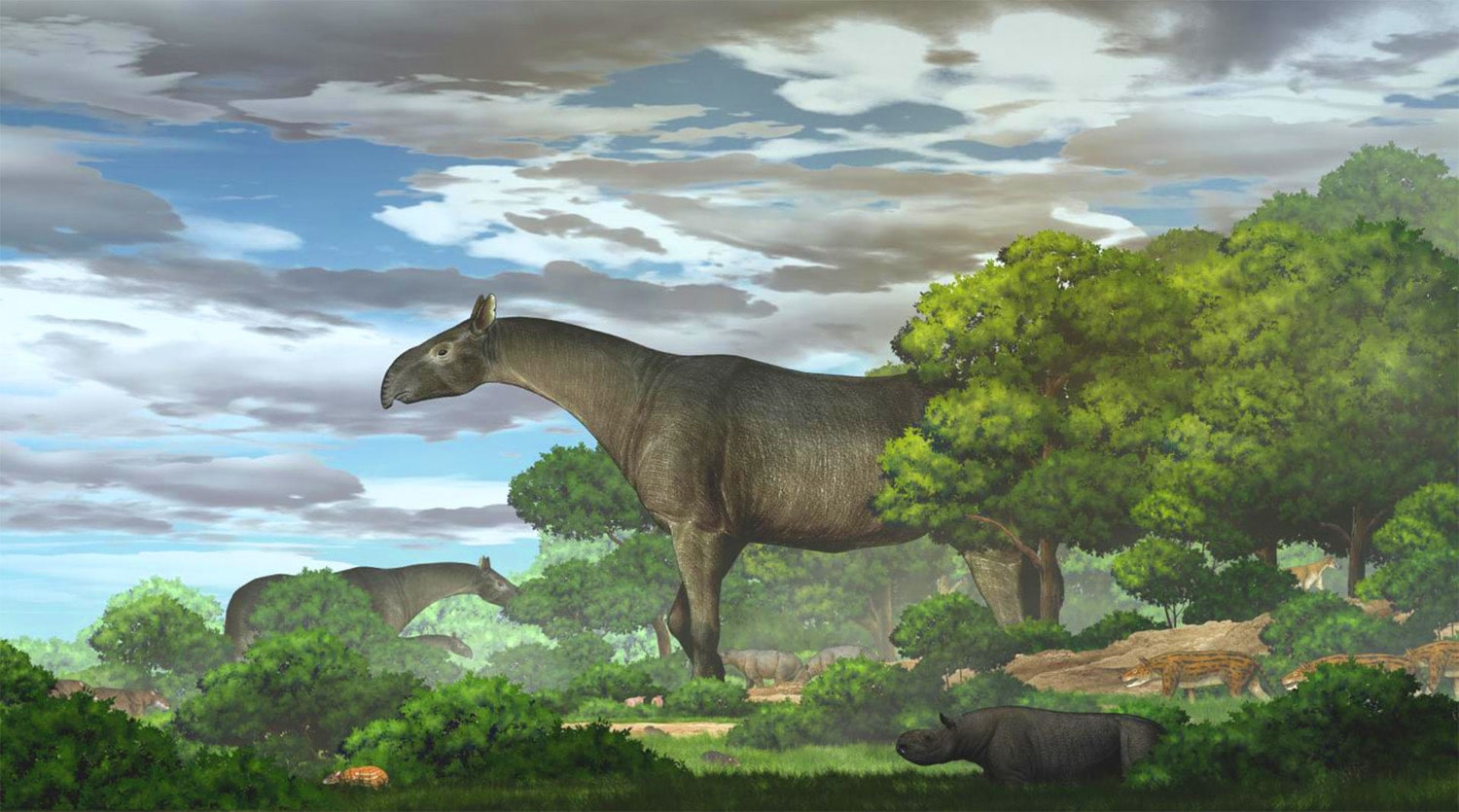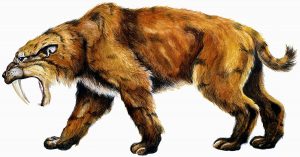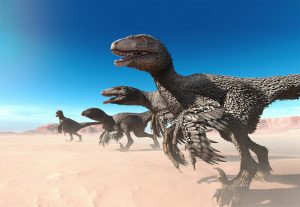
22 interesting facts about Paraceratherium (giant rhinoceros)
- 👁️ 1299
Paraceratherium, often regarded as the largest land mammal to have ever lived, roamed the Earth during the Oligocene epoch, around 23 to 34 million years ago. This gigantic prehistoric rhinoceros, which lacked the characteristic horn of its modern relatives, inhabited regions that today encompass parts of Asia including Pakistan, India, China, and Mongolia. The sheer size of Paraceratherium has intrigued scientists and paleontologists for decades, sparking numerous studies to understand its ecology, behavior, and reasons for extinction. Unveiling the life of this colossal creature provides not only a window into past biodiversity but also insights into the evolutionary history of rhinoceroses.
- Paraceratherium is known from fossils that suggest it could reach up to 16 feet in height at the shoulder.
- This prehistoric rhinoceros might have weighed up to 20 tons, making it one of the heaviest land mammals ever.
- Unlike modern rhinoceroses, Paraceratherium did not have a horn on its nose.
- The length of Paraceratherium from nose to tail could exceed 26 feet.
- Its long neck was likely adapted to browsing for leaves and twigs from tall trees.
- Paraceratherium’s skull alone was about 4.5 feet long.
- The limbs of Paraceratherium were long and pillar-like, supporting its massive body.
- It had a relatively small brain compared to its body size.
- This giant mammal’s teeth indicate that it was a herbivore, primarily feeding on vegetation.
- Paraceratherium’s fossils have been found across Eurasia, suggesting a wide geographic range.
- The first Paraceratherium fossils were discovered in the early 20th century.
- Its extinction might have been due to climate change and reduced forested areas, which affected its food sources.
- Paraceratherium belonged to the family Hyracodontidae, which is a group of hornless rhinoceros-like mammals.
- The name Paraceratherium means “near the hornless beast” in Greek.
- Some scientists believe Paraceratherium might have lived in herds, while others suggest a solitary lifestyle.
- It is classified under the suborder Ceratomorpha along with other horn-bearing and hornless prehistoric species.
- Environmental changes during the Oligocene period are thought to have played a crucial role in its decline.
- Paraceratherium’s size suggests it had few natural predators.
- This giant would have required immense amounts of food to sustain its energy needs.
- It is possible that Paraceratherium migrated seasonally to find food.
- The creature’s jaw mechanics were adapted for side-to-side chewing movements.
- Paraceratherium has been featured in numerous documentaries and books, captivating audiences with its enormous size and unique appearance.
Paraceratherium stands as a testament to the diversity and scale of prehistoric life. This gigantic rhinoceros not only highlights the extraordinary adaptations of mammals living millions of years ago but also underscores the impact of environmental changes on wildlife. As we delve into the mysteries of such ancient creatures, we gain valuable lessons about survival, adaptation, and extinction that remain relevant to understanding biodiversity and conservation efforts today.











